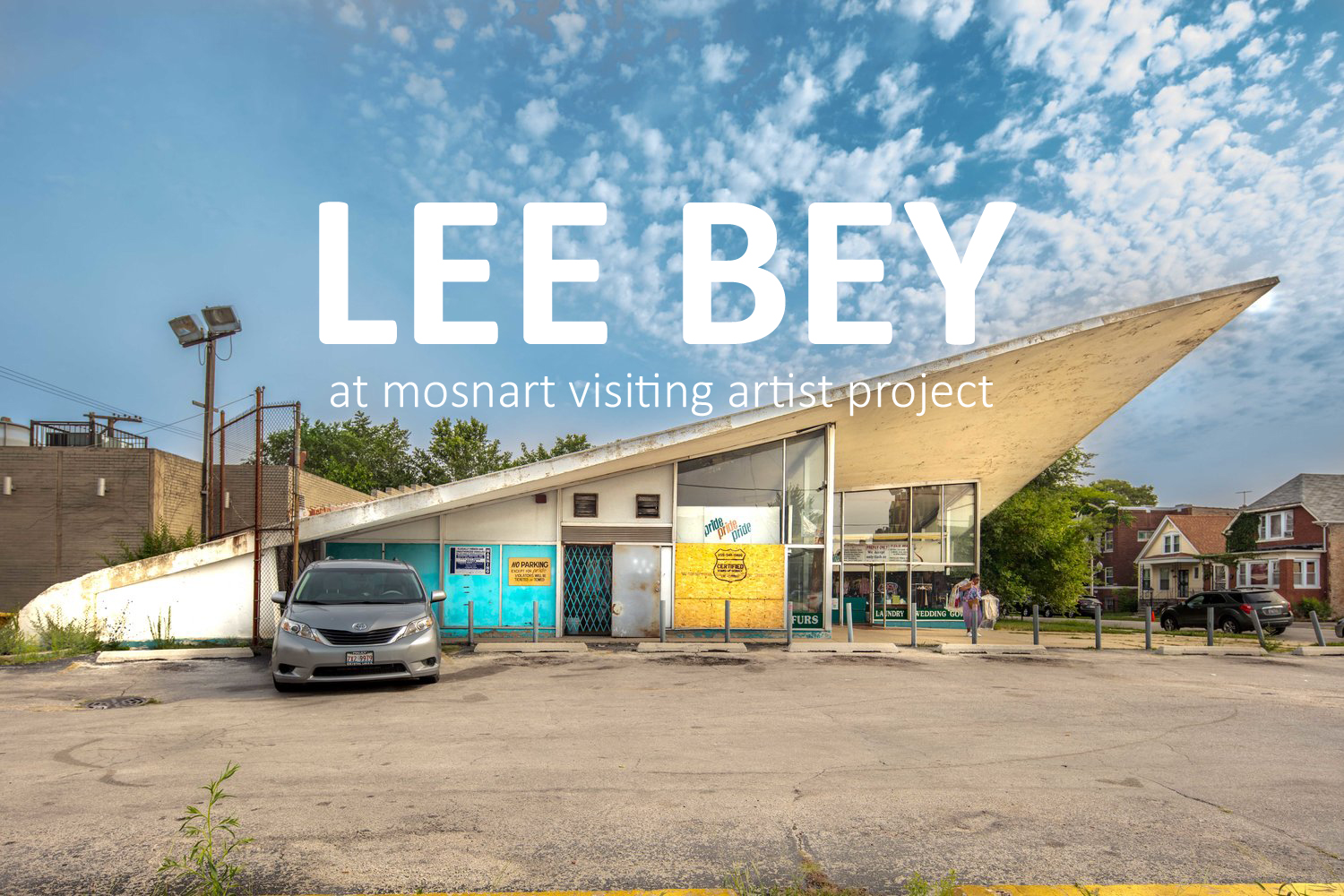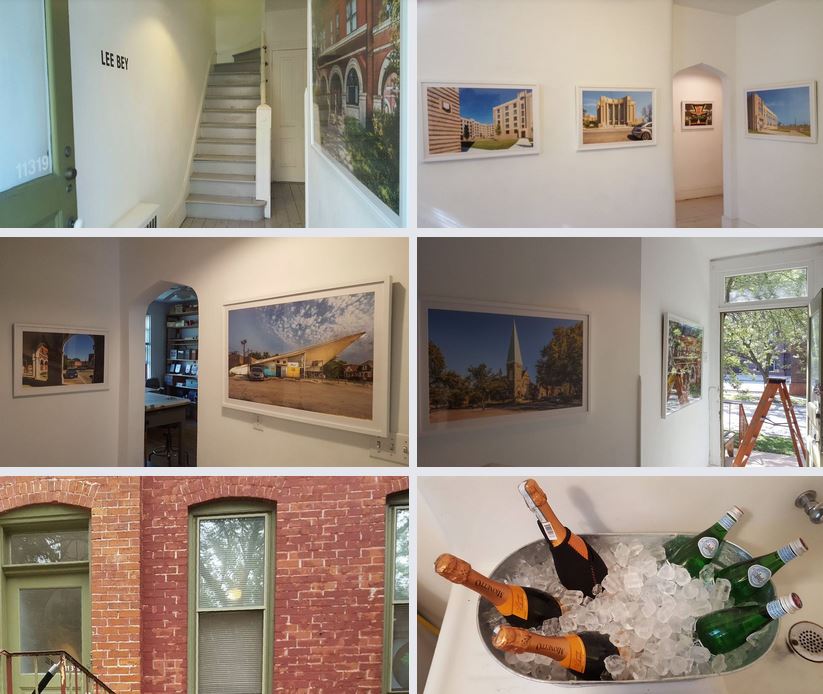
 |
|||||||||
| info/map | current | upcoming | past | ||||||

We are delighted to present "LEE BEY at mosnart visiting artist project" Works from Lee's photography exhibition "A Southern Exposure" come alive in new and meaningful ways shown in the intimate setting of 1880's worker housing in the original town of Pullman on Chicago's south side. 10 images from Lee's ongoing series will be exhibited, including architectural gems from Pullman, Bronzeville, Hyde Park, Woodlawn and other south side neighborhoods. Lee has captured them all with his remarkable eye and exacting technical expertise. Not to be missed. Opening Sept 8, 2018, 7- 9 pm The exhibition runs through October 7th Exhibition Hours: Opening Reception: September 8, 2018, 7:00-9:00pm and by appointment Exhibition will also be open for: the Pullman Art Walk Sept 16. 2018, 10 am - 4 pm and during the Pullman House Tour weekend Oct. 6 - 7 Artist's website: www.leebey.com "LEE BEY at mosnart visiting artist project" Architecture critic and photographer Lee Bey was a student at Chicago Vocational High School in 1983 when he noticed something special about the place he was attending nearly every day. He was out on the athletic field during gym class when he began to take in the lines and forms of the massive building. He began to see, for the first time, the design. Bey recalls thinking: "This is pretty cool." Bey's late father loved architecture and pointed out buildings and details to him when he was a kid growing up on the South Side. "I liked that and it planted the seed. I guess I've always liked a good building," Bey said. Completed in 1940, Chicago Vocational on 87th is an imposing structure with an elegant, curved main entrance and Art Deco features. When Bey began photographing for the exhibition, and now book project, Chicago: A Southern Exposure, he went back to his alma mater and shot from the spot where he was first smitten by its beauty. The impetus for Chicago: A Southern Exposure – a selection of which is on display at Mosnart visiting artist project - was the 2017 Chicago Architecture Biennial that, in addition to its main location in the Chicago Cultural Center, was partnering with a number of cultural institutions on programs and exhibitions. "For a city that prides itself on its architecture, the South Side has been completely neglected," he said. The Dusable Museum of African American History invited Bey, who has been writing about architecture and casually photographing the South Side for years, to present his work. For Bey and the curators, it was an opportunity not only to create a cohesive body of work, but to broaden the conversation about the built environment that has been centered on the Loop and points north. "We have the best architecture in the city, and none of it is written about or talked about." The 10 images on display at Mosnart visiting artist project space give viewers an opportunity to experience this ongoing project in an intimate setting relevant to the subject matter. Since the biennial, Bey has created upwards of 60 images in preparation for an upcoming book that will ultimately contain close to 80 photographs. Establishing the criteria for what to include was simple – architecturally beautiful buildings that are totally off the map – but the selection process has been challenging. "Any South Side Chicago neighborhood can yield 40 buildings easily." Bey's focus on buildings that are lived-in and operational is intentional. "Ruin porn and crime stories are the prevailing narrative of the South Side and this project wants to push against it." While there is some worth to documenting buildings before they vanish, Bey said the problem is in how the work is interpreted; rarely are the conditions and circumstances that created the devastation articulated. One of the images in the exhibition, the University of Chicago Law School, designed by Eero Saarinen (1910-1961), might seem to be a high-profile building but even a recent documentary on Saarinen made no mention of it. "It's a fantastic building with a glass accordion facade and reflecting pool, and it is so overlooked," he said. Bey also documents small residential places like the modernist E.J. Ingram house on 65th in Woodlawn by architect Roger Margerum. "It was designed by a black architect for a black client and is totally overlooked," said Bey. "It got some attention when it came up for sale last year, for cheap." Bey also shot the recently restored Rosenwald Apartments in Bronzeville (built in 1929) that has been home to a host of noted black creatives. Bey, who was the former architecture critic of the Chicago Sun-Times before he leaving to work in the urban planning department of the city, knows the backstory to a lot of places. For instance, the Rosenwald came close to being demolished. "It is preserved to this day because Daley put his foot down," he said. Bey doesn't own a car and travels to sites using public transportation or Uber. He uses an angle finder to look into his camera. "It is old school even though it is digital," he said, adding that he's nearsighted, so it can take a long time to get all his lines where he wants them. The work displayed thus far shows that Bey is a true formalist, creating images that are precise and balanced. "One thing that I wanted to do is catch a blue sky," said Bey. He wrestled with that at first because he didn't want the images to look like they had all been shot on the same day. "The thing about a blue sky, and this is true across the world, is that a blue sky indicates hope and optimism." At a lecture in April, Bey was asked by an audience member if he was afraid and he replied that he lived on the South Side. Then the question was cleaned up and he was asked how people responded to him being in the neighborhood with his camera equipment. "The folks in these neighborhoods know what these buildings are, they respect them and are taking care of them," he said. In a way, Bey added, no one is discovering these buildings. — Ruth Lopez |
